





According to folklore, Peachtree Street, runs through the center of the city on the Eastern Continental Divide. In actuality, the divide line enters Atlanta from the southwest proceeding to downtown. From downtown, the divide line runs eastward along DeKalb Ave. and the CSX rail lines through Decatur. Rainwater that falls on the south and east side runs eventually into the Atlantic Ocean while rainwater on the north and west side of the divide runs into the Gulf of Mexico.
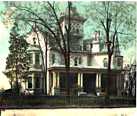

Cobb County was created Dec. 3, 1832 with 346 sq. miles from part of Cherokee Co. It was named for Judge Thomas Willis Cobb (1784 - 1835) from Va., who served as colonel in 3 Revolutionary War and later as state congressman. Others claim it was named for
Colonel John Cobb, brother of Thomas Cobb.




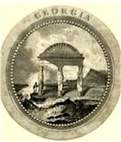
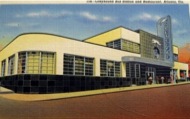

Atlanta Child’s Home -- Hightower Road

Underground Atlanta reopened in 1969. This is a newly developed tourist attraction, and is located between the capital building and Five Points, with it’s entrance on Central Ave. above Hunter St. This subterranean district evolved with the construction of viaducts over the original rail yards to alleviate traffic snarls. It was completed in 1929, leaving assorted shops of the 1890 era, which were subsequently abandoned.

Clarkdale is in Cobb County. The Clark Thread Co. erected a mill here in 1932 and named the village in honor of the Clark family. It is located within the Clarkdale Militia District, NW of Austell.
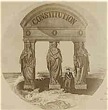 Arms of the State of Georgia
Arms of the State of Georgia1857 - 1858


Taylor’s Premium Cologne
From about 1885

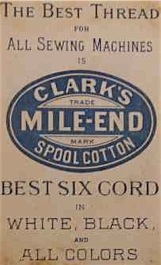
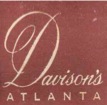

Lapel Pin - BPOE
Grand Lodge Reunion
Atlanta Ga. 1923
Governors Mansion
Greyhound Bus Station
and Restaurant
Atlanta Ga.
Silver Lake, Atlanta Ga.
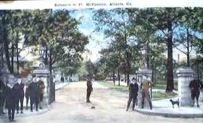 Fort McPherson Entrance 1915
Fort McPherson Entrance 1915
Fort McPherson Barracks 1907
Fort McPherson was called the “Pentagon of the South.” It still stands on the high point of the mountain. These are possibly the oldest fortifications of N. America, believed to have been built by Indians about 1530 as protection against DeSoto”s conquering legions. It has been thought to been built in 1560 by the Spanish party of Tristan DeLuna. It is located in the northern section of Fort Mountain State Park. This 1,897 acre park was presented to the State of Georgia in 1934 for development as a state park by Ivan Allen Sr.
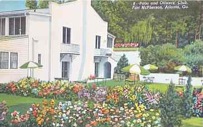
Fort McPherson Officers Club
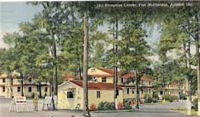 Fort McPherson 1940
Fort McPherson 1940Reception Center

“Mind your own beeswax”, came from the days when smallpox was a regular disfigurement. Fine ladies would fill in the pocks with beeswax. However when the weather was very warm the wax might melt. But it was not the thing to do for one lady to tell another that her makeup needed attention. Hence the sharp rebuke to "mind your own beeswax!"


Nails were once hand-tooled and costly. When someone tore down an aging cabin or barn he would salvage the nails so he could re-use them in later construction. When building a door, however, carpenters often drove the nail through then bent it over on the other end so it couldn't work its way out. When it came time to salvage, these bent "door nails" were considered useless or "dead."
Hence “dead as a doornail.”


We've all heard the phrase that something was done "half-ass," but few people stop to wonder what such a ridiculous expression could possibly mean. The term "half-ass" evolved from "half-adz." An adz is an axelike tool with a curved blade used for shaping wood. If you were wealthy and paid top-dollar for a new fireplace, the mantle would be shaped using an adz in the front as well as the back side, which isn't visible. However, if you weren't wealthy and wanted to save money, you could have only the front visible portion of the mantle shaped, this cheaper job being a "half-adz" job.

 “ Retreat” Fort McPherson Atlanta Georgia
“ Retreat” Fort McPherson Atlanta Georgia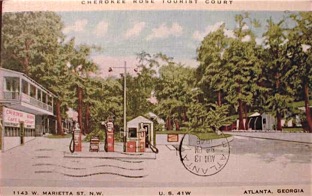
Cherokee Rose Tourist Court
1143 Marietta St. NW US 41W Atlanta Ga.
Gulf Service -- HEMLOCK 1653
Each cottage equipped with private bath
Postcard marked 1948

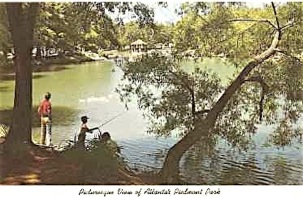
Fishing at Piedmont Park
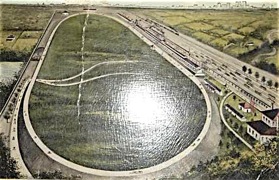
“The Auto Speedway” was located next to Hartsfield Airport, postcard from 1910
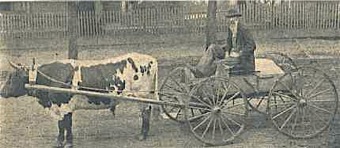 In Town for Rations, Marietta 1906
In Town for Rations, Marietta 1906
Humbug Square was an early designation
for the block bounded by Whitehall, Alabama
and Pryor streets and the W&A RR. It was
so named before the Civil War due to its
use for circuses, medicine shows, fakirs, auctioneers, etc.



Fort McPherson Entrance 1938

